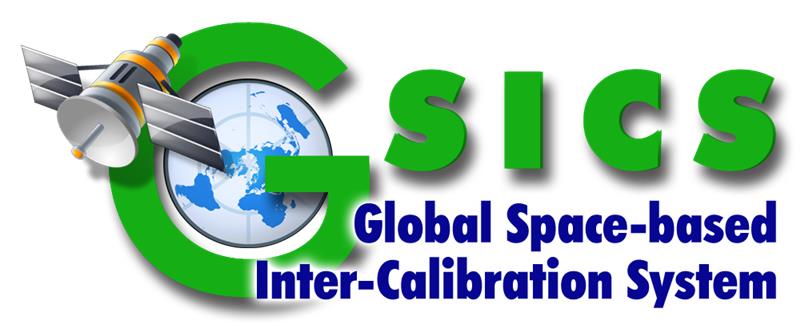Background
The Global Space-based Inter-calibration System (GSICS) was established in 2005 by WMO and the Coordination Group for Meteorological Satellites (CGMS). Its initial concept and strategy were submitted by WMO and endorsed by the 33rd CGMS meeting (Tokyo, Japan, 1-4 November 2005). On this basis, the Implementation Plan for a Global Space-Based Inter-Calibration System was developed in April 2006 and subsequently endorsed by WMO and CGMS.
GSICS was recognized in 2009-2011 as a Pilot Project in the Demonstration Phase of the WMO Integrated Global Observing System (WIGOS). During its lifetime, GSICS has built up an active expert constituency, developed a range of methodologies and tools, implemented a data management infrastructure, and brought satellite inter-calibration products to the operational stage. Meanwhile, GSICS has become a reference for WIGOS. In its section on space-based observing system calibration and traceability, the Manual on WIGOS, Annex VIII to the Technical Regulations (WMO-No.1160, 2015 edition) requests WMO Members to follow the recommendations of GSICS.
Purpose and scope of GSICS
Space-based observations of meteorological variables, atmospheric composition, ocean and land surfaces, represent a large majority of observation data assimilated in NWP models or climate models, and are increasingly used in a wide range of environmental applications. The accuracy of these observations, and their suitability to be used in an interoperable manner with other observations, directly depend on the reliability of instrument calibration. Furthermore, the challenges of monitoring climate variability and climate change require the careful exploitation of multiple satellite data records over several decades and establishing their traceability to common references.
The aim of GSICS is to coordinate the production of satellite inter-calibration information enabling the use of space-based observations with improved and globally consistent accuracy for climate monitoring, weather forecasting, and environmental applications. GSICS is therefore an essential element for interoperability and traceability of observations within WIGOS.
Within GSICS, satellite operators and science teams are collaborating to develop community-agreed best practices, standard procedures and tools. This enables agencies and their users to monitor, improve and harmonize the calibration of instruments aboard operational meteorological, climate and other environmental satellites of WIGOS. The focus of this activity is the systematic generation of in-orbit inter-calibration information to correct the individual calibration of Level 1 satellite data.
This routine production of in-orbit inter-calibration information is part of a comprehensive strategy, which involves a broader range of activities including:
• In-orbit instrument Level 1 data monitoring by comparison with references,
• Routine generation of inter-calibration corrections for near real-time applications,
• Provision of algorithms enabling recalibration of archived data,
• Traceability to absolute measurement standards,
• Prelaunch instrument characterization,
• Post-launch instrument validation
• Documentation of state-of-the-art calibration techniques.
GSICS deliverables
While the systematic generation of calibration corrections to Level 1 data is the initial focus and the main end product of GSICS, a wide range of other products and services associated to this activity are also delivered to respond to the needs of satellite data users or providers. The GSICS deliverables can be grouped in five broad categories:
- GSICS inter-calibration products related to specific instruments.
- Instrument monitoring (results)
- Assessment of instrument behavior (statistical analysis of monitoring results, investigation of anomalies, measured reflectivities of known targets, etc.)
- Correction algorithms based on these assessments (correction algorithm for bias, gain, non-linearity, wavelength shift, change of SRF, etc.)
- Corrections based on these algorithms (generated in near-real time, or time centered, or bias adjustment sequences of archived data). These corrections are either adjusted calibration coefficients, or adjustments to be applied by the user to the operational calibration coefficients.These inter-calibration products are generated by GSICS members in accordance with GSICS practices, standards, procedures and principles. Their compliance is assessed by a strict peer-review process. They are registered in the GSICS Catalogue.
- GSICS best practices, standards and procedures. These practices, standards and procedures are supporting the generation of inter-calibration products, but may also be more widely applicable. They include for instance:
- Metadata and data formats
- Standard vocabulary
- Procedures (for product acceptance, for versioning, for archiving, for selection of a reference sensor, etc.)
- Best practices (for instance for pre-launch instrument characterization, post-launch instrument validation, or instrument performance monitoring)
- Contribution to maintaining resources shared by the calibration community
- Selected space-based reference instruments and calibration datasets
- Ground-based calibration targets with their characteristics
- Solar spectra, stellar spectra
- Lunar calibration reference (GIRO, the GSICS Implementation of the ROLO model)
- Models and calibration datasets,
The calibration references are either ground-based or space-based, to provide the best possible support to radiometric measurement in the various spectral domains used by the WIGOS space-based component.
- GSICS tools
- Infrastructure elements giving access to the data
- Software tools used for the generation of inter-calibration products (for Simultaneous Nadir Observation matchup, Bias monitoring, Ray matching)
- Software tools used by satellite data users (For example, Plotting
- Software tools to facilitate product development (Format readers, product generator, etc.)
- GSICS user services
- Registration and messaging
- Product catalogue
- Wiki and websites
- Documentation and information on different media to assist satellite data users and GSICS member agencies in understanding GSICS activities and using GSICS services.
